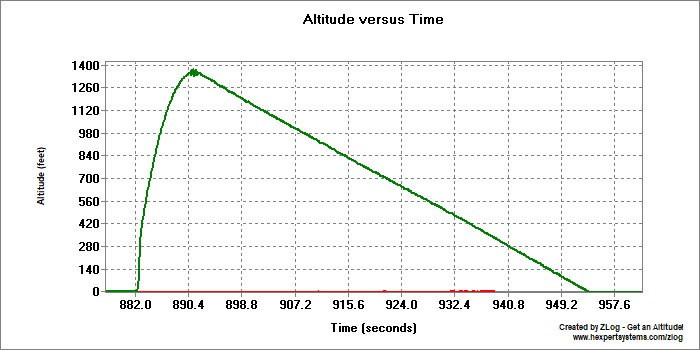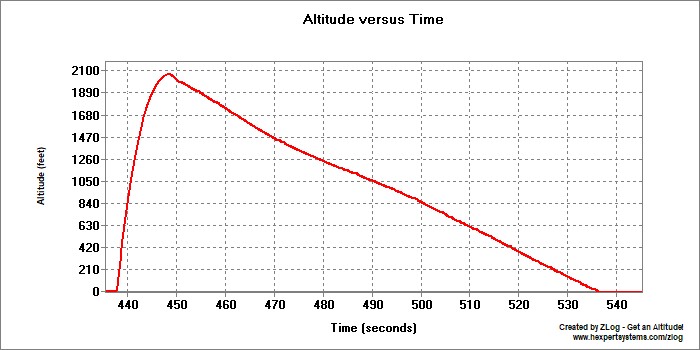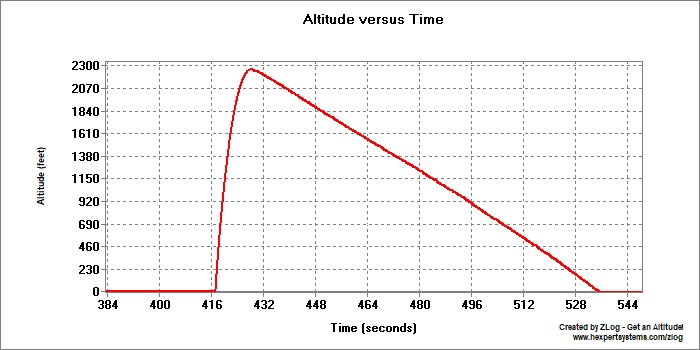| Date: | 18th-21st April 2019 |
| Location: | Funny Farm, QLD, Australia |
| Conditions: | Partly Cloudy, wind 10-25km, 28-32C |
| Members: | PK, Paul K, John K and GK |
For the trip to Thunda 2019 we again rented a motor home for my dad, my boys and me. My wife decided to sit this one out this time, and I don't blame her. 5 days in 30 degree C dusty paddock isn't something one looks forward to, other than those interested in rockets of course. We spread the 850km trip to Queensland over a couple of days so that it wasn't too much driving in any one day. There was even someone who drove all the way from Perth. That's over 4,000km one way! That's total dedication. We again had our couple of tents with us which we mostly used for storage and sleeping.
Today started out slow, as the launch window did not open until 1pm. This wasn't too bad as it gave us plenty of time to set up and prep the rocket. We had to make a slight adjustment to the release head as it was offset from the rail to allow for rail buttons, but we decided to make a tower adaptor last minute which put the rocket closer to the rail.
We set the Horizon rocket up on the pad and started pressurising it, at around 500psi we noticed that the rocket had a slight bend in it above the tower. As we continued to pressurise the rocket, the bend developed even more until we reached almost 1000psi. At this point we decided to abort the launch and remotely depressurised the rocket. It wasn't until we saw the rocket from the side how much it had bent, from where we were standing the rocket had bent away from us and so it wasn't as evident, otherwise we probably would have aborted sooner.
This was a very surprising development, as we've never seen this kind of failure before, It was obvious that this was heat related where we exceeded the glass transition temperature of the epoxy. The heat would have been a combination of sun shining on the rocket and compression heating, We suspect that the sunny side of the rocket was softer and so it bent away from the sun under pressure. The fill rate was also quite fast and so a lot of heat would have been generated internally. The glass transition temperature is only about 60C. It was about 31C ambient temperature and with the red colour on the sun side the surface temperature I suspect would have been at least 40-45C. Rapid pressurisation would have increased the internal temperature probably above 80-90 C.
Depressurisation took about 3-4 minutes as it has to push the water out through the small holes in the hose. But it depressurised without issue so this was a good test of the first wet depressurisation.
After giving it quite some thought we think we know why Horizon bent, but Dark Shadow hasn't exhibited any bending when they share very similar construction and even use the same carbon sleeve for reinforcement.
There are two main differences. Dark Shadow is yellow, so a lot lighter and less likely to absorb heat from the sun. 2. The inner liner is made plain cloth 85gsm fiberglass with the fibers running along the length and also circumferentially whereas Horizon's inner liner is made from a biaxial sleeve, but has no fibers running vertically. So if the epoxy goes soft there is really nothing resisting a bending moment. I believe that if the rocket was heated evenly we wouldn't have seen the bending, it may have extended though.
See video down below for full explanation.
There are a number of things we can try to fix this issue:
- We will probably make 1 air frame out of the plain cloth CF and paint it white and then see how it behaves during pressurization. If this happens again, we will try the higher temperature epoxy.
So we took out our backup Horizon rocket "Sandy" but because it had a thinner wall we were expecting the same behaviour to happen also if not worse. This time we only pressurised it to 495psi and filled it very slowly. This mostly did the trick but with post flight review of video and seeing the rocket, there was still a slight bend in it.
The rocket went up to 1,372 feet (418m) so we were happy with that. The parachute opened right at apogee and the rocket landed safely.
Here is the data from the flight:

Other than the bending we were happy with everything else. Here are all the other things that did work for the first time:
We will not fly either of these rockets again. But we have learned some important lessons. What was really interesting is that after a couple of days, the rockets have returned to being mostly straight again!
With the two Horizon sustainers out of commission we brought Dark Shadow out for a spin, It's last flight was at 740psi, so we decided to try at 800psi being conscious of the fact that it may experience the same problem as Horizon. We filled it slowly up to pressure and it remained nice and straight and so we launched it. The flight was good and the parachute deployed at apogee. The zLog altimeter gave us a reading of 2,066 feet (630m) which we were happy about.
The rocket landed well but the payload bay must have hit a rocket after landing and made a small crack in the side. This was only superficial and did not change the structural integrity. We repaired it simply by putting a few drops of CA glue into the crack.
Here is the altitude plot from the flight:

Today started off very windy with 20-25km/h winds in the morning so we waited to see if the winds would die down. After lunch the winds died down to perhaps 10-15km/h and so we decided to put Dark Shadow up again. This time we pressurised it to 900psi (62 bar). This was our highest launch pressure to date and again the rocket held up well to the pressurisation. The launch was nice and clean and the rocket looked like it went nice and high and we almost lost sight of it. The altimeter reading gave us an altitude of 2,269 feet (691m)! Simulations had predicted 2,346 feet, but because we don't point the rocket directly vertically ( we point it a couple of degrees away from the flight line in case the parachute fails to open) and there would have been some weather cocking as well due to the strong wind, so the lower altitude was not unexpected. Still we were very happy with the result. Here is the altimeter plot:

The rocket drifted a long way down range ~500m. Luckily John was able to track it with the drone and he pointed it out to us. The camera in the nosecone became dislodged after landing but captured the entire flight. The payload bay had a small zipper in it that probably happened when the canopy opened. We could have tried to repair it but there was a chance that the parachute could get snagged on the rough edge and so we decided to fix it properly before the next flight.
We are still not sure how much more pressure the rocket can take, but we will increase it to 1000psi on the next flight. One modification we may make to the rocket is we will likely fit it with the the Horizon deployment mechanism which is lighter.
Here is a video of the two flights:
In thinking about the pressure chamber overheating problem, we came up with a potential quick solution and that was to lay down some toilet paper on the side of the rocket and wet it down. This way the rocket would use evaporative cooling to keep the surface cool, and when you launch the rocket the toilet paper would just come off due to the high acceleration.
To try this technique out, we first went over to Cran who had his water rockets setup for kids to use. If you want to know more about what he does please visit his website here:
We put some toilet paper on the side of one of the bottle rockets and then left it for a few minutes to see how it behaved. The toilet paper is quite fragile when it is wet and so you have to handle it carefully, but the paper stayed stuck for the duration of the test and didn't dry out too quickly. When the rocket was launched pretty much all the paper had come off the rocket and was shredded into small pieces. We closely inspected the rocket after landing to see how much paper had stayed behind. We noticed only a few very small pieces had been caught on the fins of the rocket, but other wise the rest of the rocket was clean.
Here is a video of the bending issue.
On this day it was quite windy again, but we set up our low pressure launcher and decided to launch a flour rocket. We pressurised it to 120psi and launched it. The flight was a normal flight and the rocket recovered well.
For our second flight of the day we decided to fly Light Shadow since we had brought it with us. We were only going to pressurise it to 250psi and only expected around 600-700 feet. We also decided to give the toilet paper cooling method a go to see what would happen. We only laid one strip of toilet paper on the side facing the sun which also happened to be the top surface s when the rocket was on the ground. We had to keep the rocket on the ground in the sun for about 15 minutes while we set up a couple of other things and by then the paper started drying out, so we re-wet it.
The launch of Light Shadow has an acceleration of only around 16G and so the paper stayed on until around burnout when it shredded itself off the the rocket. When we inspected the rocket after landing there were again just a few very small traces left on a couple of the fins. So pretty clean all up.
In conclusion you probably would not use the paper in this way, however, it still may be an option to keep it on there even when the rocket is on the pad, and then wipe it off just prior to pressurisation. That way the rocket stays cool for as long as possible but you don't get any of the potential drag inefficiencies if some pieces remain on the rocket.
We also almost had a crash because the parachute opened really late. This was because we had fitted a smaller chute to the rocket so it wouldn't drift as far in the wind. This rocket normally uses a big parachute. This deployment mechanism is set up for the larger chute to get pulled out of the payload bay, but when the nosecone ejected it may have moved past the parachute. In any case the parachute did eventually fully open and the rocket landed safely.
Over the course of the weekend we also flew a number of pyro rockets. They were all recovered successfully, though Pod 3 separated at deployment because the 3D printed coupler couldn't hang on to the eye bolt holding the shock cord. All pieces came down without damage otherwise. The coupler will be fixed so the rocket will fly again.
This is a highlights video of the whole Thunda 2 event.
Here are some other photos from the launch:
There were many amazing flights at the event., We have added a whole photo album here.
| Launch | Details | ||||||||||||||||||||||||
| 18th April 2019 | |||||||||||||||||||||||||
| 1 |
|
||||||||||||||||||||||||
| 2 |
|
||||||||||||||||||||||||
| 3 |
|
||||||||||||||||||||||||
| 19th April 2019 | |||||||||||||||||||||||||
| 4 |
|
||||||||||||||||||||||||
| 5 |
|
||||||||||||||||||||||||
| 6 |
|
||||||||||||||||||||||||
| 20th April 2019 | |||||||||||||||||||||||||
| 7 |
|
||||||||||||||||||||||||
| 8 |
|
||||||||||||||||||||||||
| 9 |
|
||||||||||||||||||||||||
| 21st April 2019 | |||||||||||||||||||||||||
| 10 |
|
||||||||||||||||||||||||
| 11 |
|